|
| |

|
|
| |
How are beavers affecting you?
|
|
Beavers are causing flooding on my property |
Here are some solutions to flooding caused by beaver dams on your property. Please note that each solution requires permitting. Click each option to learn more. |
|
Flexible Pond Levelers
|
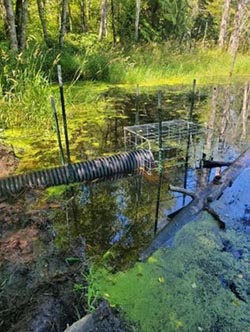 Pond levelers control the maximum water level behind a beaver dam. The effectiveness depends on the beaver, which may relocate upstream or downstream and build a new dam if the water level is dropped too low. A professional should perform installation and maintenance. Installing pond levers generally requires an HPA (Hydraulic Project Approval) permit from the Washington Department of Fish and Wildlife (WDFW), which may be challenging to obtain if salmon use the stream. Pond levelers control the maximum water level behind a beaver dam. The effectiveness depends on the beaver, which may relocate upstream or downstream and build a new dam if the water level is dropped too low. A professional should perform installation and maintenance. Installing pond levers generally requires an HPA (Hydraulic Project Approval) permit from the Washington Department of Fish and Wildlife (WDFW), which may be challenging to obtain if salmon use the stream.
|
Close
|
|
Dam Notching | Removal
|
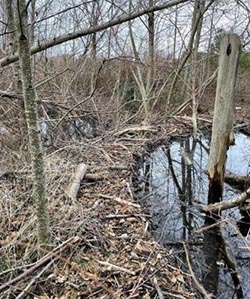 Beaver dam notching is a very temporary method to lower the water level behind the dam. This involves removing a one- to three-foot section of the dam to allow water to flow downstream. Beavers will usually repair the dam overnight. Dam notching requires an HPA permit from WDFW. Beaver dam notching is a very temporary method to lower the water level behind the dam. This involves removing a one- to three-foot section of the dam to allow water to flow downstream. Beavers will usually repair the dam overnight. Dam notching requires an HPA permit from WDFW.
Beaver dam removal is a temporary solution to allow free flow of the stream. Typically, beavers will rebuild the dam in the same location or nearby over the course of a few days. Dam removal requires an HPA permit from WDFW. |
|
|
|
Culvert Protection
|
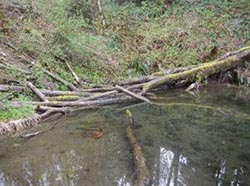 Protect the inlet of a culvert from being dammed by beavers by constructing a V-shaped, semicircular, or trapezoidal fence using woven wire mesh. This would require an HPA permit from WDFW. Protect the inlet of a culvert from being dammed by beavers by constructing a V-shaped, semicircular, or trapezoidal fence using woven wire mesh. This would require an HPA permit from WDFW.
Close |
|
|
Lethal Control
|
Lethal control is a last-resort option for beaver control. This is not a long-term solution, as new beavers are likely to move in and take their place. This would usually involve live trapping and euthanizing, but lethal traps can be used if a special permit is obtained. You may invite a recreational trapper to harvest the beavers during trapping season, who must have a valid trapping license. Or, you may hire a professional trapper who must be certified through WDFW: Find a Wildlife Control Operator.
Close
|
|
Note: If you are being affected by a dam on someone else’s property, please work with your neighbor to find a solution. Consult us at (360) 416-1448 if needed. |
Beavers are harming vegetation on my property |
Here are some ways to protect your vegetation from beaver activity. Click each option to learn more. |
|
Tree Fencing
|
| Tree fencing can be installed by wrapping the trunk of the tree with welded wire fencing, hardware cloth, or multiple layers of chicken wire. Corrugated plastic drainpipe can also be used, but dark colors may burn the tree in direct sunlight, so a wide diameter pipe or holes may prevent overheating. The fencing must be at least 3 feet high. Staking the barriers may prevent beavers from getting underneath or around the fencing. |
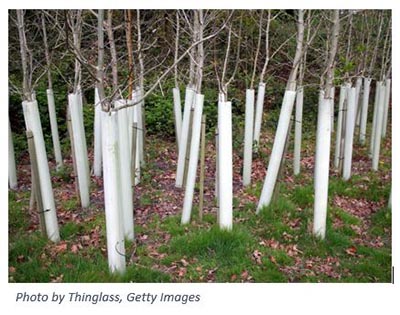
|
Close
|
|
Textural Repellant
|
| Textural repellant can be used to discourage beavers from cutting down trees. Apply a mixture of sand and latex paint to the first four feet of the tree trunk. Commercial taste and odor repellants are also available but often require reapplication and have mixed results. |
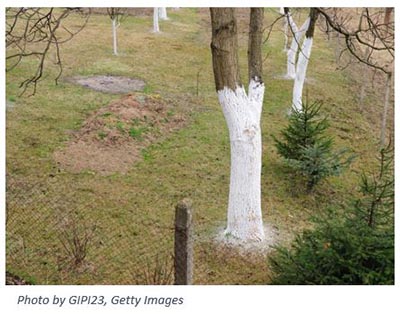
|
|
|
Plant Choice
|
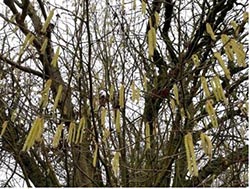 Choose plant species that beavers generally avoid, and plant them away from known beaver trails. Use plants such as cascara, elderberry, hawthorn, ninebark, osoberry, Sitka spruce, and twinberry. Avoid planting alder, birch, cottonwood, vine maple, and willow. Choose plant species that beavers generally avoid, and plant them away from known beaver trails. Use plants such as cascara, elderberry, hawthorn, ninebark, osoberry, Sitka spruce, and twinberry. Avoid planting alder, birch, cottonwood, vine maple, and willow.
|
|
Beavers are causing issues on public land |
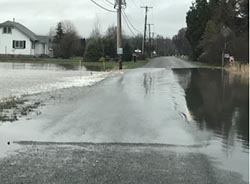 If beavers are causing flooding or damage on public property such as parks, roads, or other county or state land, you can report it to one of these numbers: If beavers are causing flooding or damage on public property such as parks, roads, or other county or state land, you can report it to one of these numbers:
Damage to roads: Call our Operations Division at (360) 416-1480.
Damage to parks: Contact Parks and Recreation at (360) 416-1350 or parksrec@co.skagit.wa.us
Damage to public drainage utility: Contact (360) 416-1434 or aidam@co.skagit.wa.us
Damage to other public spaces: Contact (360) 416-1448
|
I want to learn more about beavers |
|
Beavers
|
Beavers are nocturnal rodents that can be found anywhere their food—trees, woody plants, and other vegetation— is abundant. They typically establish in rivers, streams, lakes, marshes, and even roadside ditches. The feel and sound of flowing water triggers their instinct to construct dams.
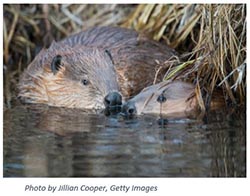 Beavers build dams to create suitable habitat for their beaver lodges, access to food, and protection from predators. The lodges, which consist of a feeding area and a dry nest den, have underwater entrance. Beavers use whatever materials are available to construct their dams, including stone, mud, wood, and plants. Beavers build dams to create suitable habitat for their beaver lodges, access to food, and protection from predators. The lodges, which consist of a feeding area and a dry nest den, have underwater entrance. Beavers use whatever materials are available to construct their dams, including stone, mud, wood, and plants.
Beavers mate between January and March and produce anywhere from 1 to 8 kits between April and June. The number of kits depends on the amount of food available and the female’s age. Most kits stay with the adults for 2 years, then leave to search for suitable habitat and mates. Beavers live up to 12 years in the wild. |
Close
|
|
Environmental Benefits
|
Beavers are keystone species, meaning that they have a huge impact on their ecosystem. They are “ecosystem engineers” that significantly alter their environment and create hotspots of biodiversity.
Beavers:
- Provide critical habitat for many terrestrial and aquatic species. This often includes salmon and other cold-water fish, migratory waterbirds which often nest or rest near beaver ponds, and many other amphibian and mammal species.
- Recharge groundwater and elevate water tables.
- Cool downstream temperatures of the waterway by almost 5 degrees Fahrenheit on average.
- Improve water quality by slowing and storing rainwater, excess sediments, and excess nutrients in their ponds.
- Store carbon in organic sediment in beaver ponds.
- Provide natural fire breaks by creating wetlands with wetter soils that can serve as a barrier to wildfire spreading.
- Increase hydrological complexity which may help mediate high winter flows.
|
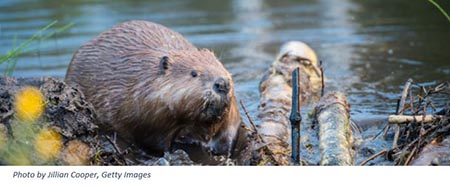
|
|
|
|
| |
|
|
| |
 |
|
|
|